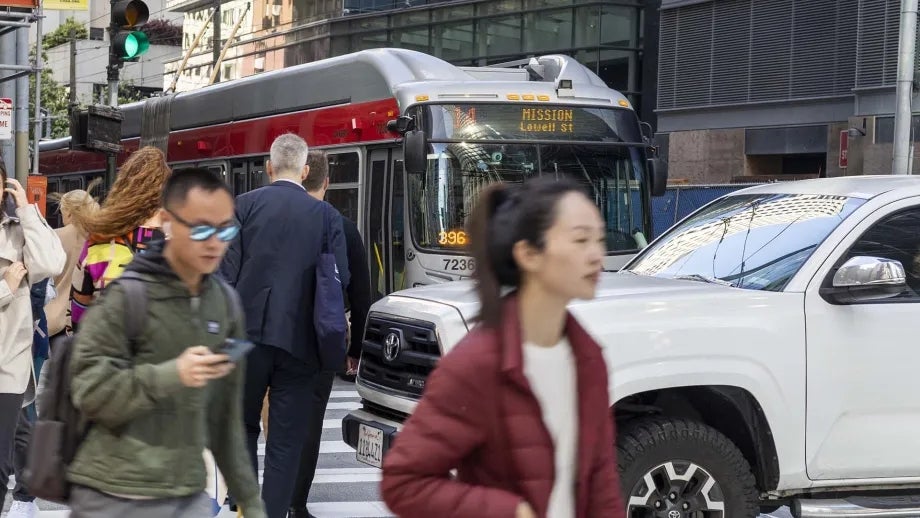What is Transit Priority?
Elements of Transit Priority
Transit priority can include road design and traffic enforcement to help transit vehicles avoid traffic congestion, reduce delays, and move more predictably.
Transit Lanes
Lanes dedicated exclusively for transit vehicles, either full-time or during days/times with peak traffic congestion.
High Occupancy Vehicle (HOV) Lanes
Lanes dedicated to transit vehicles and other high-occupancy vehicles, either full-time or during days/times with peak traffic congestion.
Transit Signal Priority (TSP)
Modified traffic signal timing so transit vehicles encounter a green light or reduced wait times at intersections with traffic lights/signals.
Queue Jump Lanes
Lanes exclusively for transit vehicles and HOVs to bypass traffic queues at intersection approaches or freeway on-ramps. Queue jump lanes are often paired with Transit Signal Priority.
Transit Stop Placement & Spacing
Locations for transit stops that minimize delay and optimize stop frequency (to balance convenient stop access with efficient operations). Examples of improved locations might be the far side of intersections with traffic lights, or the near side of intersections controlled by a stop sign.
Transit Stop Design
Designing stops to reduce delays to transit vehicles (such as using boarding islands or bus bulbs/curb so buses do not have to pull in and out of the traffic lane during passenger loading/unloading).
Traffic/Parking Regulations & Enforcement
Regulations to speed transit travel (including turn restrictions for non-transit vehicles, tow-away zones and other curb management along transit routes), paired with automated or manual enforcement to ensure effective transit priority (such as on-bus cameras that can cite vehicles blocking transit-only lanes or bus zones).
Learn more.
See the latest on Transit Priority efforts in the Bay Area.









